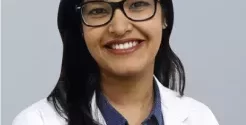Dr. Raj Nagarkar, MD & Chief of Surgical Oncology and Robotic Services, HCG Manavata Cancer Centre Nasik.
 Wilms Tumour, the most common type of kidney cancer among children tend to occur in young children, mostly before the age of five. Also referred to as Nephroblastoma, the tumours develop from the nephroblasts and usually occurs in only one kidney. In rare cases, multiple tumours may be found in both the kidneys. With appropriate treatment at the right time, the cancer can be cured with approximately 90% chances of survival, with 15 to 20% chances of recurrence occasionally.
Wilms Tumour, the most common type of kidney cancer among children tend to occur in young children, mostly before the age of five. Also referred to as Nephroblastoma, the tumours develop from the nephroblasts and usually occurs in only one kidney. In rare cases, multiple tumours may be found in both the kidneys. With appropriate treatment at the right time, the cancer can be cured with approximately 90% chances of survival, with 15 to 20% chances of recurrence occasionally.
Some facts about Wilms Tumour:
● Wilms Tumour generally affects children between 3 to 4 years age
● While the causes of Wilms Tumour are yet to be found out, it may be due to genetic abnormalities
● Wilms Tumour is rare amongst adults; may develop before birth and appear in a new born as a birth defect
● The most visible symptom is a lump in the abdomen
● Associated problems include health problems with kidneys, urinary tract and genitals
● Wilms tumours are slightly more common amongst girls than boys
Causes and Symptoms of Wilms Tumour
The causes for Wilms tumour are still unknown, but in some cases, gene changes that occur early in a child’s life, perhaps even before birth might also cause Wilms tumour and in rare cases, hereditary might also play a role. The first noticeable symptom is a painless lump in the abdomen, swelling or an enlarged abdomen. The child might have fever, loss of or poor appetite, feel nauseated and vomit frequently. Since the kidneys are affected, the tumour may also lead to high blood pressure or blood in the urine.
Stages of Wilms Tumour
The stages of the Wilms tumour is determined by the results of surgery, tumour cell examination, and if the malignancy has spread. Generally, there are 5 stages observed.
● Stage 1 – The tumour is found only in 1 kidney, which can be completely eradicated with surgery.
● Stage 2 – The tumour is found in the kidney and in the fat, soft tissue, or blood vessels near the kidney. It might have spread to the renal sinus as well. This can also be completely eradicated with surgery.
● Stage 3 – Cancer is identified in regions near the kidney that surgery cannot entirely eradicate. It’s possible that the tumour has migrated to neighbouring organs and blood arteries, as well as across the abdomen and lymph nodes. The cancer in stage III has not progressed beyond the abdomen.
● Stage 4 – More distant organs, such as the lungs, liver, bones, and brain, as well as lymph nodes outside the abdomen, have been affected by cancer.
● Stage 5 – Cancer cells are found in both the kidneys at the same time.
Diagnosis of Wilms Tumour
Upon noticing the mass and other symptoms and analysing them whether by the parent or the doctor during a routine examination, and if it is suspected to be a Wilms tumour, an ultrasound, CT or an MRI scan of the abdomen is done to determine the size and type of the tumour. It also helps in finding out if the cancer has spread to the lymph nodes, liver, lungs or the other kidney.
Treatment of Wilms Tumour
The main treatment option for a child with Wilms Tumour is to surgically remove the tumour. During the surgery , surgeons evaluates the other kidney also rule out any lesion or growth .Post-surgery the child chemotherapy is given. If the cancer is found to have spread significantly, the child may also require radiation.
Wilms Tumour is curable if diagnosed and treated at its onset. It is important to keep an eye on any abnormalities developing in the child. if any persisting symptoms are noted ; inform the doctor immediately for further examination & diagnosis. In doing so, the child can be safeguarded from suffering kidney cancer at an early age. Take the child for periodic ultrasound scans upon diagnosis and treatment of Wilms tumour to look for other health problems in the child’s kidney.
 Newspatrolling.com News cum Content Syndication Portal Online
Newspatrolling.com News cum Content Syndication Portal Online





